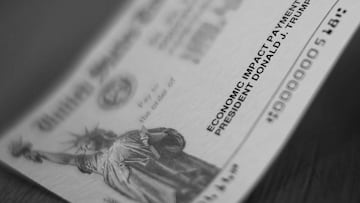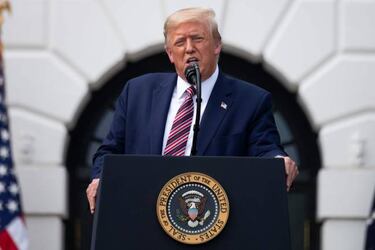Stimulus check: why blacks and Hispanics had to wait longer
A recent analysis of the Economic Impact Payments issued as part of the CARES Act has shown that there was a discrepancy that can be linked to racial and structural inequality.

As the coronavirus pandemic ravaged households and businesses across America, the CARES Act was signed into law to help them deal with the financial challenges that they were being faced with. Already talk is closing in on further support for those most in need, although a new study shows that there was a disparity in the first round, based on race.
Follow all the latest coronavirus news in the US on our daily live blog
Inequality in stimulus check payments
The analysis, published in July, was undertaken by the Urban Institute and states that the stimulus checks - Economic Impact Payments (EIPs) - were received quicker by white households than those of blacks or Hispanics. By the end of May, it reports, around 75% of white adults had had their EIP while only 69% and 63% of blacks and Hispanics respectively had received theirs.
- Second stimulus check and other proposals on the table
- Who is for and against the $40,000 salary limit?
- $600 benefits boost: next stimulus bill needs to hurry
- Second stimulus check $40,000 limit: calculate how much you can get
- Paycheck Protection Program (PPP): will I be taxed on my loan?
- Second stimulus check: what is known about July payment?
One of the major reasons behind this could be related to those issues of the Inland Revenue Services getting the money into the hands of eligible people. The easiest and quickest way to do this was via a direct deposit into the recipients bank. Structural inequalities across the country mean that there is a greater proportion of non-white adults with a bank account in place. Other, slower, processes - including issuing paper checks or debit cards - then had to be used by the IRS.
According to Janet Holtzblatt and Michael Karpman from the Urban Institute, ”adults were less likely to receive the payments if they had family incomes below 100%*, or if they were black or Hispanic, and particularly if they were Hispanic and in families with non-citizens.” (*of the Federal Poverty Line)
"Nearly 7 in 10 adults reported that their families received the economic impact payment as of mid-to-late May 2020, but there were significant disparities by income, race/ethnicity, and family citizenship status in payment receipt," the report concluded.
There were over 4,000 adults included in the UI study, which looked at data from 14-27 May and based on this it found that 85% of households with income between 2.5-4 times the Federal Poverty Line received their payment by late May. This contrasts with just 59% of those up to the FPL.
More questions asked over imbalance
On the business side of the aid package, concerns have been raised over who was most in need of financial support versus those that received it.

Take the Paycheck Protection Program as an example. The recently published list of the companies that benefited from a forgivable loan included some very surprising names including Kanye West, Ice Cube and some wealthy friends of President Trump.
Stimulus checks: what happens next?
Related stories
Discussions over whether or not another blanket round of checks were going to be issued to the American people have been going on since shortly after the first payments were made. And some families are desperately needing support.
With this in mind, Republicans and Democrats are planning on putting their heads together over the coming weeks to have something agreed by August. What that will look like, we have some ideas from what those on either side of the aisle have been saying. Whether or not it focuses on those most in need, as well as boosting the economy, we will have to wait and see.

